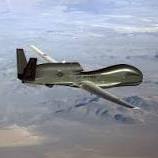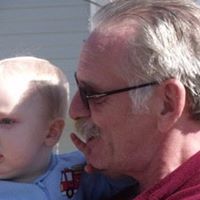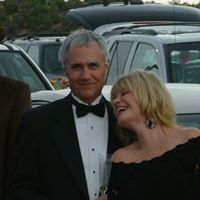John T Wolcott
age ~58
from Provo, UT
John Wolcott Phones & Addresses
- Provo, UT
- Apopka, FL
- Altamonte Spg, FL
- Portland, OR
- Orem, UT
Work
-
Company:Law Office of John Wolcott
-
Address:
Languages
English
Specialities
Massage Therapy
Medicine Doctors

John O Wolcott, Portland OR - LMT
view sourceSpecialties:
Massage Therapy
Address:
721 Nw 9Th Ave Suite 100A, Portland, OR 97209
5035250090 (Phone), 9712440219 (Fax)
5035250090 (Phone), 9712440219 (Fax)
Languages:
English

John K. Wolcott
view sourceSpecialties:
Family Medicine
Work:
Diagnostic Clinic Of Longview PAFamily Care
5174 Fm 1252 W, Kilgore, TX 75662
9039861901 (phone), 9039846151 (fax)
5174 Fm 1252 W, Kilgore, TX 75662
9039861901 (phone), 9039846151 (fax)
Education:
Medical School
University of Texas Medical School at San Antonio
Graduated: 1984
University of Texas Medical School at San Antonio
Graduated: 1984
Procedures:
Allergen Immunotherapy
Arthrocentesis
Electrocardiogram (EKG or ECG)
Skin Tags Removal
Vaccine Administration
Arthrocentesis
Electrocardiogram (EKG or ECG)
Skin Tags Removal
Vaccine Administration
Conditions:
Acute Bronchitis
Angina Pectoris
Cardiac Arrhythmia
Chronic Bronchitis
Contact Dermatitis
Angina Pectoris
Cardiac Arrhythmia
Chronic Bronchitis
Contact Dermatitis
Languages:
English
Description:
Dr. Wolcott graduated from the University of Texas Medical School at San Antonio in 1984. He works in Kilgore, TX and specializes in Family Medicine.
Isbn (Books And Publications)




Us Patents
-
Adaptable Time Division Switch
view source -
US Patent:39718913, Jul 27, 1976
-
Filed:Mar 14, 1975
-
Appl. No.:5/558605
-
Inventors:John R. Wolcott - Orlando FL
-
Assignee:Martin Marietta Corporation - Rockville MD
-
International Classification:H03K 1322
H04J 300
H04L 300
G06F 500 -
US Classification:179 15AP
-
Abstract:A switching network is disclosed that is capable of handling analog, PCM and CVSD signals connected to said network via loops or trunks. All signals are converted into CVSD format, synchronized to the network clocks, and switching is carried out on a time divided basis by shifting bits from one channel slot in the frame format on the input side of the switching circuit to a different channel slot in the frame format on the output side of the switching circuit. The multiplexing and demultiplexing of data on the input and output sides of the channel shifting mechanism is controlled by words in a random access memory. Thus, the mux-demux operation is easily varied by changing the word storage in the random access memory. The channel shifting is controlled by the words stored in a second random access memory. Thus, channel shifting is also easily varied.
-
Adaptable Time Division Switch
view source -
US Patent:RE299910, May 8, 1979
-
Filed:Nov 21, 1977
-
Appl. No.:5/853069
-
Inventors:John R. Wolcott - Orlando FL
-
Assignee:Martin Marietta Corporation - Orlando FL
-
International Classification:H03K 1322
H04J 300
H04L 300
G06F 500 -
US Classification:179 15AP
-
Abstract:A switching network is disclosed that is capable of handling analog, PCM and CVSD signals connected to said network via loops or trunks. All signals are converted into CVSD format, synchronized to the network clocks, and switching is carried out on a time divided basis by shifting bits from one channel slot in the frame format on the input side of the switching circuit to a different channel slot in the frame format on the output side of the switching circuit. The multiplexing and demultiplexing of data on the input and output sides of the channel shifting mechanism is controlled by words in a random access memory. Thus, the mux-demux operation is easily varied by changing the word storage in the random access memory. The channel shifting is controlled by the words stored in a second random access memory. Thus, channel shifting is also easily varied.
-
Extremely High Frequency Systems And Methods Of Operating The Same
view source -
US Patent:20190297664, Sep 26, 2019
-
Filed:Jun 7, 2019
-
Appl. No.:16/435281
-
Inventors:- Campbell CA, US
Kenneth R. Kveton - Happy Valley OR, US
Michael A. Bourdess - Portland OR, US
John Wolcott - Campbell CA, US
Steve Novak - South Lake Tahoe CA, US
Roger D. Isaac - San Jose CA, US
Gary D. McCormack - Tigard OR, US -
International Classification:H04W 76/28
H04B 1/401
H04B 5/02
H04W 76/14 -
Abstract:Embodiments discussed herein refer to systems, methods, and circuits for establishing EHF contactless communications links. The EHF contactless communication link may serve as an alternative to conventional board-to-board and device-to-device connectors. The link may be a low-latency protocol-transparent communication link capable of supporting a range of data rates. The link may be established through a close proximity coupling between devices, each including at least one EHF communication unit. Each EHF unit involved in establishing an EHF communication link may progress through a series of steps before data can be transferred between the devices. These steps may be controlled by one or more state machines that are being implemented in each EHF communication unit.
-
Extremely High Frequency Systems And Methods Of Operating The Same
view source -
US Patent:20190021132, Jan 17, 2019
-
Filed:Sep 18, 2018
-
Appl. No.:16/134476
-
Inventors:- Campbell CA, US
Kenneth R. Kveton - Happy Valley OR, US
Michael A. Bourdess - Portland OR, US
John Wolcott - Campbell CA, US
Steve Novak - South Lake Tahoe CA, US
Roger D. Isaac - San Jose CA, US
Gary D. McCormack - Tigard OR, US -
International Classification:H04W 76/28
H04B 5/02
H04B 1/401
H04W 76/14 -
Abstract:Embodiments discussed herein refer to systems, methods, and circuits for establishing EHF contactless communications links. The EHF contactless communication link may serve as an alternative to conventional board-to-board and device-to-device connectors. The link may be a low-latency protocol-transparent communication link capable of supporting a range of data rates. The link may be established through a close proximity coupling between devices, each including at least one EHF communication unit. Each EHF unit involved in establishing an EHF communication link may progress through a series of steps before data can be transferred between the devices. These steps may be controlled by one or more state machines that are being implemented in each EHF communication unit.
-
Extremely High Frequency Systems And Methods Of Operating The Same
view source -
US Patent:20180139800, May 17, 2018
-
Filed:Dec 22, 2017
-
Appl. No.:15/852879
-
Inventors:- Campbell CA, US
Kenneth R. Kveton - Happy Valley OR, US
Michael A. Bourdess - Portland OR, US
John Wolcott - Campbell CA, US
Steve Novak - South Lake Tahoe CA, US
Roger D. Isaac - San Jose CA, US
Gary D. McCormack - Tigard OR, US -
International Classification:H04W 76/28
H04B 5/02
H04B 1/401
H01L 23/31 -
Abstract:Embodiments discussed herein refer to systems, methods, and circuits for establishing EHF contactless communications links. The EHF contactless communication link may serve as an alternative to conventional board-to-board and device-to-device connectors. The link may be a low-latency protocol-transparent communication link capable of supporting a range of data rates. The link may be established through a close proximity coupling between devices, each including at least one EHF communication unit. Each EHF unit involved in establishing an EHF communication link may progress through a series of steps before data can be transferred between the devices. These steps may be controlled by one or more state machines that are being implemented in each EHF communication unit.
Resumes

John Wolcott
view source
John Wolcott
view source
John Wolcott
view source
John Wolcott
view source
John Wolcott
view source
John Wolcott
view source
John Wolcott
view source
John Wolcott
view sourceLocation:
United States
License Records
John Preston Wolcott
License #:
MLO.048418.000
Issued Date:
Oct 22, 2015
Type:
MORTGAGE LOAN ORIGINATOR
John O Wolcott
License #:
2113 - Expired
Category:
Massage Therapy
Issued Date:
Jan 8, 2007
Effective Date:
Nov 2, 2011
Expiration Date:
Nov 1, 2011
Type:
Massage Therapist
John F Wolcott
License #:
34961 - Expired
Category:
Nursing
Issued Date:
Sep 6, 1979
Effective Date:
Nov 15, 2016
Expiration Date:
Oct 31, 2016
Type:
Registered Nurse
John O Wolcott
License #:
1484 - Expired
Category:
Massage Therapy
Issued Date:
Nov 14, 2006
Effective Date:
Jan 8, 2007
Expiration Date:
Feb 14, 2007
Type:
Temporary Massage Therapist
Lawyers & Attorneys

John Wolcott - Lawyer
view sourceOffice:
Law Office of John Wolcott
Specialties:
Car Accidents
Motorcycle Accident
Motorcycle Accident
ISLN:
920655342
Admitted:
1984
Law School:
LaSalle University, J.D.
Googleplus

John Wolcott

John Wolcott

John Wolcott
Flickr
Youtube
Myspace
Plaxo

John Wolcott
view sourceAnaheim, CAProject Manager at McCune Audio/Video/Lighting

John Wolcott
view source
John Wolcott
view source
John Wolcott
view source
John Wolcott
view source
John Wolcott
view source
John Wolcott
view source
John Wolcott
view source
John Oliver Wolcott
view sourceClassmates

John Wolcott
view sourceSchools:
Butler Middle School Salt Lake City UT 1977-1980
Community:
Don Mee

John Wolcott
view sourceSchools:
Marina High School Huntington Beach CA 1972-1976
Community:
Benny Esparza, Roy Rausch

John Wolcott
view sourceSchools:
Kiddie College Baltimore MD 1995-1999
Community:
David Welsh, Tiffany Brown, Samantha Dais, Pamela Hissom

John Wolcott
view sourceSchools:
Marist High School Chicago IL 1967-1971
Community:
Sandra Hubl, Tracy Thibeau, Daniel Klatt, John Ferenzi

John Wolcott
view sourceSchools:
St. Michael School Netcong NJ 1961-1965
Community:
Terry Byrne, Rene Romano, Greg Bauer, Marie Baldwin

John Wolcott
view sourceSchools:
Netcong High School Netcong NJ 1965-1970
Community:
Peter Stewart, Rhonda Ferrara

John Wolcott, Riverdale H...
view source
St. Michael School, Netco...
view sourceGraduates:
John Wolcott (1961-1965),
Ryan Herbert (1987-1991),
Greg Bauer (1959-1967),
Donna Torrisi (1973-1977),
John Smith (1980-1984),
Andrea DeMaria (1976-1987)
Ryan Herbert (1987-1991),
Greg Bauer (1959-1967),
Donna Torrisi (1973-1977),
John Smith (1980-1984),
Andrea DeMaria (1976-1987)
Get Report for John T Wolcott from Provo, UT, age ~58
















